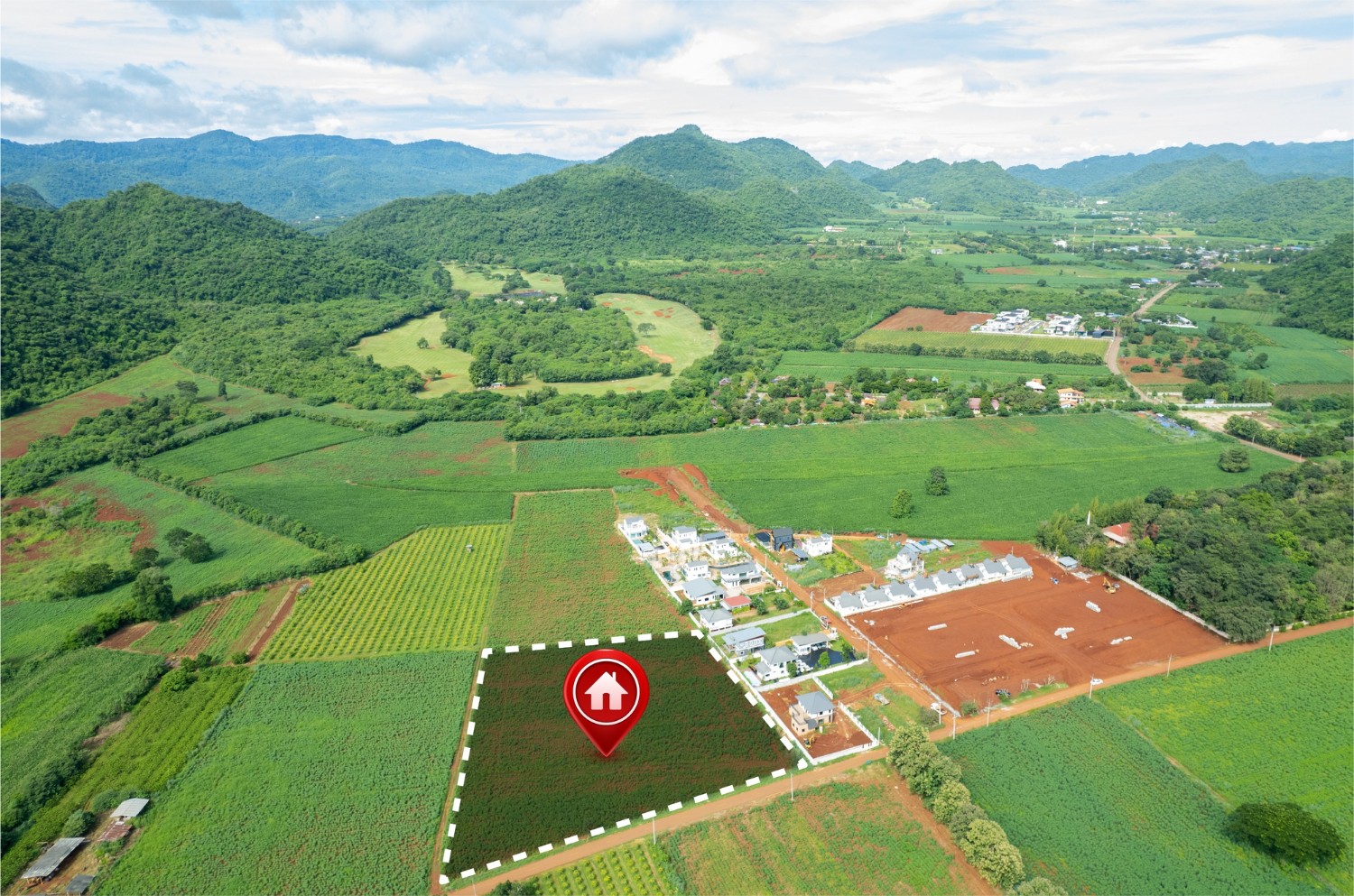Selling land can be a rewarding venture, but understanding the differences between raw land and developed land is crucial. Raw land, which is essentially untouched and undeveloped, offers unique opportunities and challenges. It attracts a specific group of buyers who are interested in its potential. These buyers often look for land they can develop according to their own needs and visions, such as agricultural projects, residential developments, or recreational spaces.
On the other hand, developed land comes with its own set of characteristics. Developed land has already been improved with infrastructure such as utilities, roads, and possibly buildings. This type of land usually appeals to buyers looking for ready-to-use properties. Whether it’s for commercial use, housing, or industrial purposes, developed land typically commands a higher market price due to these advancements.
Both raw and developed land have their advantages and disadvantages. Selling each type involves different strategies and understanding legal and regulatory considerations. We aim to provide a comprehensive guide to help make informed decisions whether to sell raw or developed land. Together, we can explore the financial benefits and potential drawbacks, ensuring you navigate the sale process with confidence and success.
Understanding Raw Land Sales
Definition and Characteristics of Raw Land
Raw land refers to parcels of land that are undeveloped and lack any significant improvements or infrastructure. This type of land often comes without utilities like water, electricity, or road access. Raw land is typically found in its natural state, which means it may have trees, grasses, or other natural features. This kind of property is usually more affordable compared to developed land because it requires more investment to prepare it for construction or farming.
One of the key characteristics of raw land is its flexibility. Since it hasn’t been developed, buyers have a blank canvas to work with. This can be appealing for various uses, such as agriculture, recreation, or future residential or commercial development. Investors and developers often see raw land as a long-term investment with the potential for significant value appreciation.
Common Buyers for Raw Land
Different types of buyers are interested in raw land for various reasons. One common group is real estate developers who see potential for future residential or commercial projects. They purchase raw land to build homes, office buildings, or shopping centers once the necessary infrastructure is added. Another group includes investors looking to hold the land as a long-term investment, expecting its value to increase over time.
Additionally, raw land appeals to individuals seeking to build custom homes in rural or secluded areas. These buyers want the freedom to create a living space exactly to their liking, away from the hustle and bustle of urban life. Moreover, farmers and ranchers might buy raw land for agricultural purposes, taking advantage of the natural state of the land to grow crops or raise livestock.
Analyzing Developed Land Sales
Definition and Characteristics of Developed Land
Developed land is property that has been improved with infrastructure like roads, utilities, and often buildings. This type of land is ready for immediate use or building, making it more convenient for buyers. Developed land typically requires less initial investment for preparation, which can be a significant advantage for those wanting to start construction right away. It often comes with various amenities that make it easier to develop for residential, commercial, or industrial purposes.
This type of property usually carries a higher price tag than raw land due to the investments already made to enhance it. Developed land generally sits in urban or suburban areas where infrastructure demands are high. Because of these improvements, it offers more immediate value and usability, making it an attractive option for many types of buyers.
Common Buyers for Developed Land
Several types of buyers are interested in developed land. Residential developers are a significant group, as they look for parcels where homes can be built quickly and sold to homeowners. These developers seek areas where demand for housing is high, making developed land an ideal choice because it shortens the time needed to start construction. Commercial developers also pursue developed land for building shopping centers, office parks, and other business-related structures.
Additionally, individual homebuyers might purchase developed land to build custom homes in areas that already have necessary utilities. Businesses and corporations may also seek developed parcels for new headquarters or branch locations, benefiting from the ease of setting up shop quickly without the need for extensive initial groundwork. Investors interested in properties that can immediately generate income also favor developed land, as they can lease or sell the property more quickly compared to raw land.
Comparing Financial Benefits and Drawbacks
Financial Advantages of Selling Raw Land
Selling raw land can offer significant financial benefits primarily due to its lower initial costs. Since raw land is undeveloped, it comes without the expenses associated with infrastructure and buildings. This lower cost structure can also attract a broader range of buyers, including investors and developers who are looking for a project. Additionally, raw land can appreciate significantly in value over time, particularly if the area around it becomes more developed or popular.
Another financial advantage of selling raw land is the potential for profit through fewer maintenance costs. Raw land requires minimal upkeep, so sellers can save money on property maintenance. Furthermore, taxes on raw land are often lower compared to developed land, contributing to lower ownership costs and potentially higher profits upon sale.
Financial Benefits of Selling Developed Land
Developed land typically sells at a higher price point due to the existing improvements and infrastructure. Buyers pay a premium for land that’s ready for immediate use, whether it’s for residential, commercial, or industrial purposes. This higher valuation can result in substantial financial returns for sellers. Additionally, the market for developed land tends to move more quickly, meaning you might sell your property faster compared to raw land.
Developed land also attracts a diverse group of buyers including businesses, developers, and individual homebuyers, which can drive up competition and prices. Sellers might also find financial benefits in leasing options if they are not ready to sell immediately, thus generating ongoing income from the property.
Potential Drawbacks for Each Option
While there are clear financial benefits to selling both raw and developed land, there are also potential drawbacks to consider. Raw land might take longer to sell because it requires more investment and planning from buyers. The lack of infrastructure can be a deterrent for those looking for ready-to-use property. Additionally, regulatory hurdles such as permits and zoning can slow down the transaction process, adding to the complexity.
Developed land, while commanding a higher price, comes with its own set of costs and maintenance responsibilities. The higher property taxes and upkeep costs can eat into the profits for sellers. Moreover, changes in market conditions can impact the resale value, making it crucial to time the sale properly to maximize returns. Both options have their merits, and the right choice depends on your individual circumstances and goals.
Legal and Regulatory Considerations
Permits and Zoning for Raw Land vs Developed Land
Understanding the legal landscape is crucial whether you are selling raw or developed land. Raw land often requires a longer permitting process because buyers will need to obtain the necessary approvals for development. This can include environmental assessments, zoning changes, and building permits. These steps can be time-consuming and costly, which might make raw land less attractive to some buyers.
Developed land, on the other hand, typically has existing permits and zoning approvals, which can expedite the selling process. However, this doesn’t mean developed land is free from regulatory challenges. Changes in zoning laws or building codes can impact the value and usability of the property, making it essential to stay up-to-date on local regulations.
Navigating Development Regulations
Both raw and developed land are subject to a range of development regulations that can affect the sale. For raw land, understanding local laws related to land use, environmental impact, and construction is essential. Buyers will look for properties that have a clear path to development, so providing information on zoning laws and potential pitfalls can make your listing more attractive.
For developed land, it’s important to be aware of ongoing regulatory requirements, such as maintenance of infrastructure and adherence to building codes. Properties that don’t comply with these regulations can face fines and decreased market value. Ensuring your developed land meets all current regulations can simplify the sale and make the property more appealing to buyers.
Conclusion
Selling land, whether raw or developed, comes with its unique set of challenges and benefits. Understanding these nuances can help you make informed decisions that maximize your property’s value and appeal to potential buyers. By weighing the financial advantages and potential drawbacks, as well as navigating the legal landscape effectively, you can streamline the selling process and achieve better results.
At 7Land Corp, we specialize in helping landowners sell their land quickly and efficiently, regardless of its condition. When it comes to buying and selling land, our expert team is here to guide you through every step, ensuring a smooth and profitable transaction. Reach out to us today to learn how we can help you achieve your land-selling goals.




